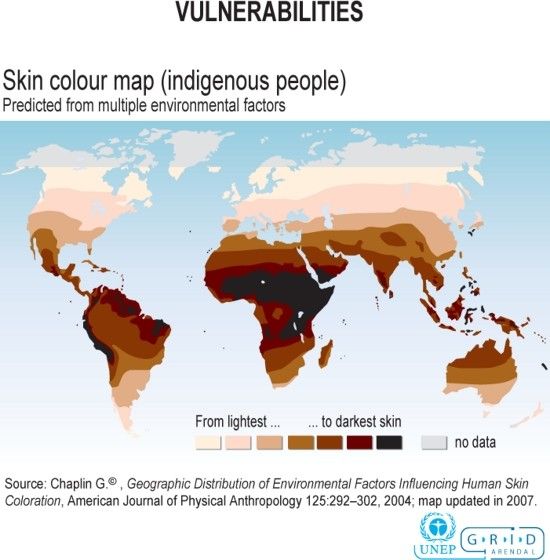Race and Ethnicity
Looking in the Cultural Mirror at 100, The Top 10
My top 10 essays since this blog began.
Posted July 15, 2015

Five years ago—can it really be that long?—I began writing pieces for this Psychology Today blog, Looking in the Cultural Mirror. I had long been feeling that American psychology had an inadequate understanding of culture. While psychology may define itself as the science of behavior, when it comes to people, it seemed to me more the science of American behavior than the science of human behavior.
This is my one hundredth piece, and it offers an opportunity for reflection--what have I been trying to accomplish, and what have readers found to be of interest.
There were two key events in my life that offered me exposure to cross-cultural experiences denied to most American psychologists of European descent. The first was my marriage to an African American anthropologist, which put me in contact with her friends, relatives, and a range of new American experiences from gospel to chitterlings.
The second, because my wife’s work was devoted primarily to Brazilian Indians—mainly the Krikati—was the opportunity to live in Brazil for a couple of years as a visiting professor of clinical psychology. In addition to personally experiencing everyday life and social interactions, I also supervised a large number of therapy cases, both directly, and also indirectly as a supervisor of therapy supervisors. As a result, I had a window on Brazilians’ intimate thoughts, feelings, and relationships denied to most foreigners. In addition, over time, I came to understand Brazilians’ very different way of thinking from ours in matters concerning race; and I even got to live with the Krikati for a month.
When I began writing Looking in the Cultural Mirror, I subtitled the blog, “How understanding race and culture helps us answer the question: ‘Who am I?’"; and the great majority of my pieces have kept to this theme. Over time though, I have also written about other areas of interest of mine, including drug policy, social and political issues, and other psychological topics, such as emotions or aging.
As I began thinking about this 100th piece, and tabulating the number of reader visits to the previous 99, I was pleased to discover that all of the most visited ones dealt with race and culture. This was a reassuring confirmation for me that the ideas that I most want to communicate are also the ones that readers most want to read.
So here, following the tradition of counting down to number one, are the titles of my top ten, with links to each of them.
10. What Race Is George Zimmerman? https://www.psychologytoday.com/blog/looking-in-the-cultural-mirror/201…
9. How Should Racism Be Defined? https://www.psychologytoday.com/blog/looking-in-the-cultural-mirror/201…
8 and 7 are in a virtual tie. They are:
How Cultures Make People Conform https://www.psychologytoday.com/blog/looking-in-the-cultural-mirror/201…
What Does It Mean to Look Jewish? https://www.psychologytoday.com/blog/looking-in-the-cultural-mirror/201…
6. Are American Friendships Superficial? https://www.psychologytoday.com/blog/looking-in-the-cultural-mirror/201…
5. Another Reason Races Don’t Exist https://www.psychologytoday.com/blog/looking-in-the-cultural-mirror/201…
4. Cultural Misunderstandings https://www.psychologytoday.com/blog/looking-in-the-cultural-mirror/201…
3. How to Raise Smart Kids Chinese Style https://www.psychologytoday.com/blog/looking-in-the-cultural-mirror/201…
2. Arranged Marriages https://www.psychologytoday.com/blog/looking-in-the-cultural-mirror/201…
And the most visited piece is...
1. How Come Other Folks All Look Alike? https://www.psychologytoday.com/blog/looking-in-the-cultural-mirror/200…
Image Source:
Emmanuelle Bournay, UNEP/GRID-Arendal ,2004; map updated in 2007. (UNEP = United Nations Environmental Program)
http://www.grida.no/graphicslib/detail/skin-colour-map-indigenous-peopl…
Description:
The twin role played by the skin – protection from excessive UV radiation and absorption of enough sunlight to trigger the production of vitamin D – means that people living in the lower latitudes, close to the Equator, with intense UV radiation, have developed darker skin to protect them from the damaging effects of UV radiation. In contrast, those living in the higher latitudes, closer to the Poles, have developed fair skin to maximize vitamin D production.
Chaplin G. , Geographic Distribution of Environmental Factors Influencing Human Skin Coloration, American Journal of Physical Anthropology 125:292–302, 2004; map updated in 2007.
Check out my most recent book, The Myth of Race, which debunks common misconceptions, as well as my other books at http://amazon.com/Jefferson-M.-Fish/e/B001H6NFUI
The Myth of Race is available on Amazon http://amzn.to/10ykaRU and Barnes & Noble http://bit.ly/XPbB6E
Friend/Like me on Facebook: http://www.facebook.com/JeffersonFishAuthor
Follow me on Twitter: www.twitter.com/@jeffersonfish
Visit my website: www.jeffersonfish.com





